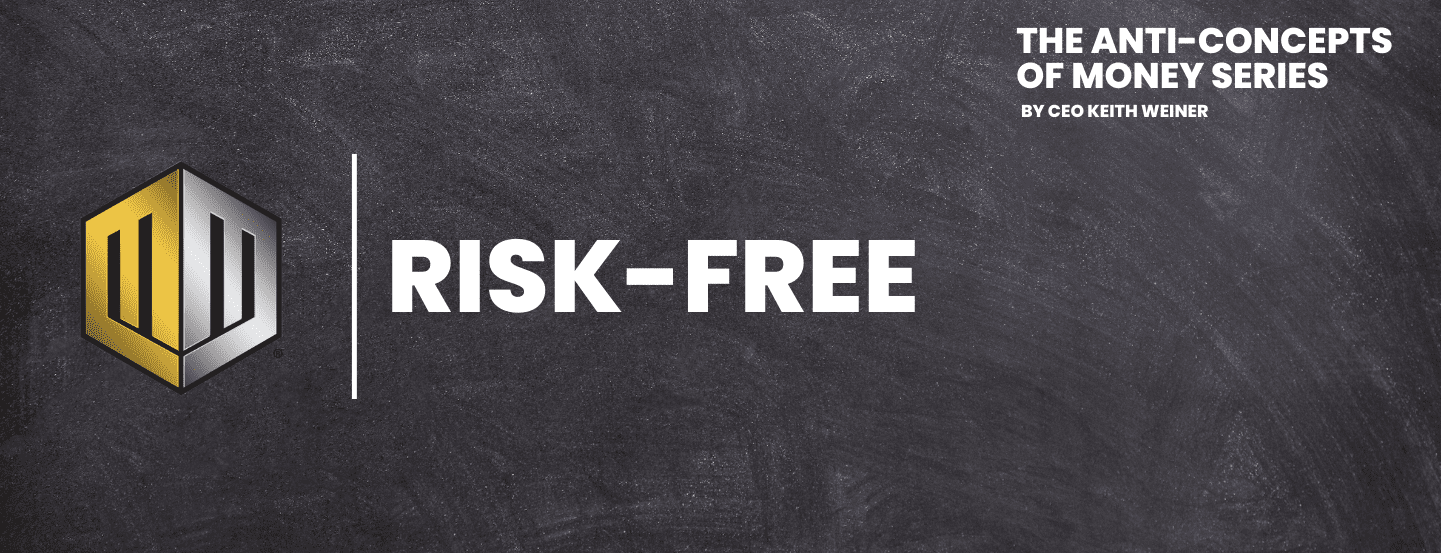If you’ve read the What Is Money? essay from this Anti-Concepts of Money Series we can now discuss the Anti-Concept “Risk-Free”.
The Anti-Concept of Risk-Free
Recall, that the anti-concept money is supposed to mean anything used as medium of exchange. But in reality, money is what you hold, when you do not wish to take the risk of owning other assets. The proper concept of money implies safety. It is safe to hold money. Risk means the possibility that you will not get your money back.
However, what we call money today—the dollar—is the liability of the Fed. The Fed issues this liability to fund its portfolio of government bonds.
To hold a dollar, is to be a creditor to the Fed. Which is to be a creditor to the government.
The very definition of money that leads one to think that the dollar is money, nearly stops dead any attempt to think about the risk of the dollar itself. Money just is. How could there be risk in holding money? And if there is risk, what would it be?
If there is a risk of the government defaulting on its $30 trillion worth of debt, then there is a risk of collapse of the dollar backed by that debt.
In fact, there is no way that the government could ever hope to pay it off.
Can the Government Default?
And this leads us to the anti-concept of risk-free rate. Wikipedia states that the risk-free rate:
“… is the rate of return of a hypothetical investment with scheduled payment(s) over a fixed period of time that is assumed to meet all payment obligations.”
Notice that phrase “that is assumed to meet all payment obligations”. There is no risk of government default, because it is assumed.
It gets worse. The government does not have the means to repay. There is not merely a risk of default—it is certain! The only thing the government can do is borrow more, when it has to make a payment. It sells new bonds to repay principal and interest on old bonds when they mature.
Let that sink in. Debt, which is certain to be defaulted, is defined as risk-free. Not asserted to be free of risk, in an explicit proposition that can be checked and challenged. But defined as the investment which pays the risk-free rate.
Make sure to subscribe to our YouTube channel and weekly newsletter to stay up to date on the latest breaking news happening in the markets and how to protect yourself.
Want to talk with us about our Gold Fixed Income products? Schedule a call with a Relationship Manager today!


 :
:

